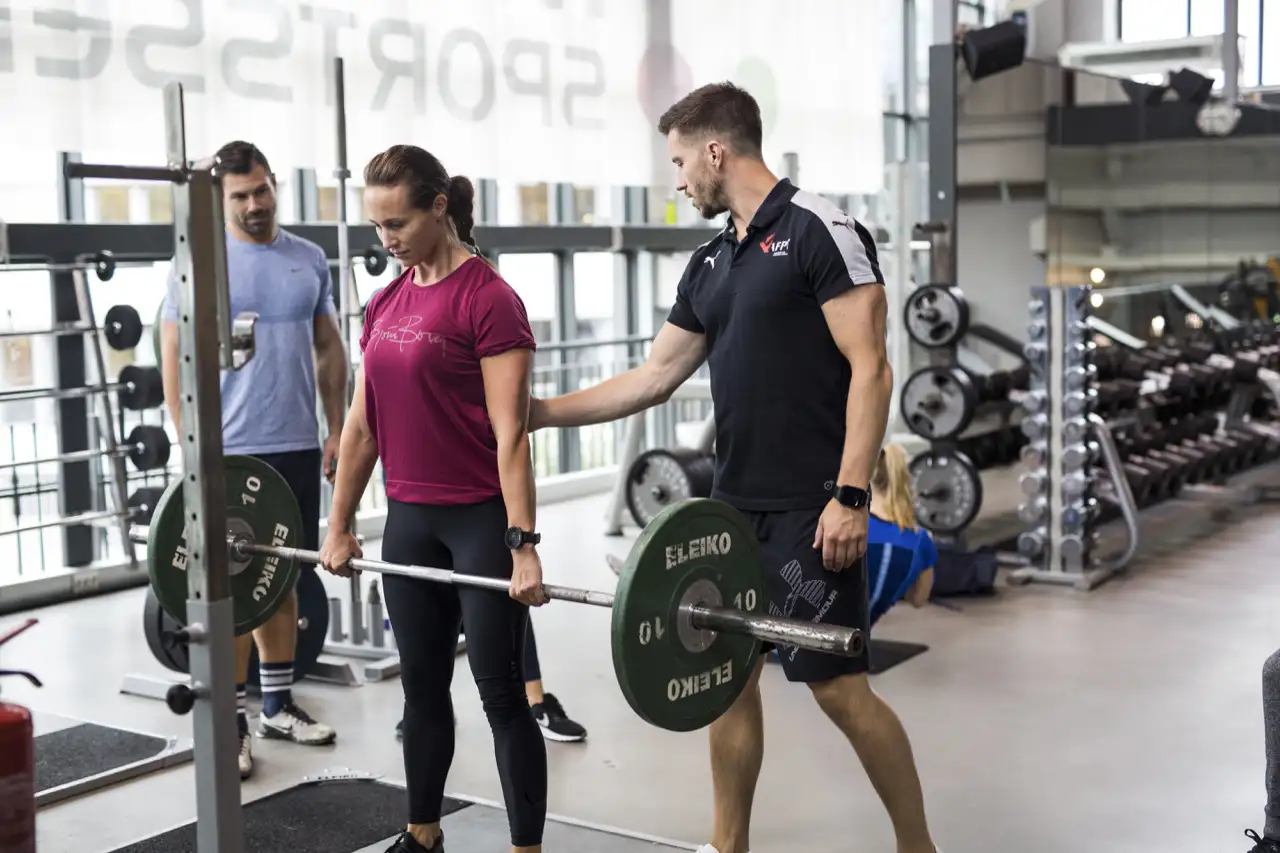6 Ways Golf Can Improve Your Lifting
By Charles Staley, B.Sc, MSS
Director, Staley Training Systems
http://www.staleytraining.com
My golf teacher Jeff Campbell recently remarked to me “Golf and bowling are the only two sports that you can enjoy without being good at them.”
Luckily for me, I think he’s right. I started taking golf lessons about six months ago and have a total of 18 holes actual experience on the course to date. So I’m obviously a complete novice, but more importantly, I’m certain that golf is helping my lifting, in at least six different ways…
1) Developing An Appreciation For Precision And Smoothness.
During my first several lessons, I was literally amazed at the level of precision that golfers must attain to have even moderate levels of success. Aside from the fact that you’re aiming at a tiny ball with a thin sliver of metal at high speeds, striking the ball ¼ off center (in any plane of movement) turns the shot from great to terrible. Success in golf is measured not in feet or inches, but millimeters. After calibrating yourself according to these standards on the driving range, no resistance-training skill seems beyond your capacity- even Olympic lifts.
The precision required by top golfers is developed through smoothness, or put another way, the absence of unnecessary muscular tension. On the surface, this might not seem like an important trait in a sport that is literally defined by high levels of muscular tension, but sometimes appearances are deceiving: unnecessary levels of tension on antagonistic muscles, or even in synergists can impede the successful coordination required during strength events. Golf teaches that often, less is better, and at least at my current level of skill, slower, smaller movements usually result in faster, longer shots.
2) Acquiring A “Backup Sport”
One of the most important lessons I’ve learned in the past 5 years is the value of developing some psychic distance between you and your passion. Steven Pressfield (author of The War Of Art) explains that identifying too closely with your job or avocation is dangerous because once you begin to equate your personal value with your professional success, you become less and less willing to “put yourself on the line,” which of course, is fundamentally required for that success to occur.
If, on the other hand, you think of your avocation as a role rather than an identity, you’re more willing to put yourself out there, take your lumps, learn from the process, and improve your game.
If I’m having a bad day in the gym, it’s easy to think “Well, I’ll have a good session on the driving range” and vice versa. Having a secondary sport really helps to “take the edge off,” which paradoxically helps to maintain your motivation levels in both endeavors.
3) A Fun Active Recovery Workout
OK, OK, maybe you’re saying golf isn’t terribly athletic. But at least here in Arizona, you’re getting outside, you’re breaking a sweat, you’re practicing a physical skill, and even low levels of physical activity tend to blunt late-night TV-induced junk-food cravings. And truth be told, I find golf to be a fantastic recuperative activity, particularly if you’re walking (or as Phil Stevens and I ended up doing last week) pushing the cart for 5 holes, strongman-style, because they sent us out with a weak battery!
4) Traversing The Proprioceptive Landscape
It’s good to learn new sports, for a number of reasons. Aside from increasing generalized physical traits, you’re also developing a richer proprioceptive palette, and from this wider context, you can develop a better understanding of your primary sport. You’ll develop useful analogies and parallels— for example, a golf swing and a snatch both start off slow, as the larger, more proximal joints initiate the movement, and then finish fast as the smaller, more distal segments allow you to “crack the whip” at the end of the movement.
And trust me, experiencing the “sweet spot” as you snag a golf ball just perfectly is just as satisfying as a perfectly executed snatch, discus throw, or knockout punch. This is why we work so hard in sport after all— for those fleeting but beautiful moments when perfectly executed movement creates a startlingly incredible result. Those rare moments are what sustain us to slave away in the gym in hopes of experiencing it again someday.
5) Honing The Competitive Instinct
Regardless of the sport, competition is competition. And the drive to win is at least partly learnable. Golf is a great way to stoke these competitive instincts, in a way that won’t physically detract from your gym efforts.
6) Increasing Your Mental Stamina
Last week Phil and I were on the 17th hole, and I chipped a ball over the green, which then necessitated a second chip, which also overshot the green. By the time I got the ball on the green, I was mentally “done” with the hole, which caused me to cut corners on the putt, which further increased my score. Top golfers learn to stay with it mentally, all the way to the end, regardless of how well or how poorly their day is going. That’s not a bad trait to bring to your assistance exercises toward the end of your workout. After all, how often have you had a bad start to your workout, which ended up completely killing your motivation to at least accomplish something productive before you left the gym?
Even If Golf Isn’t Your Thing…
Consider a secondary sport or even a “pseudo-sport” of some type— Ideally something that’s a complete contrast to your primary interest. If you’re needing a few suggestions, try investigating fencing, racquetball, table tennis, and/or bowling. They’re all fun, interesting, challenging, and most of all, a welcome respite from grinding the weights.
